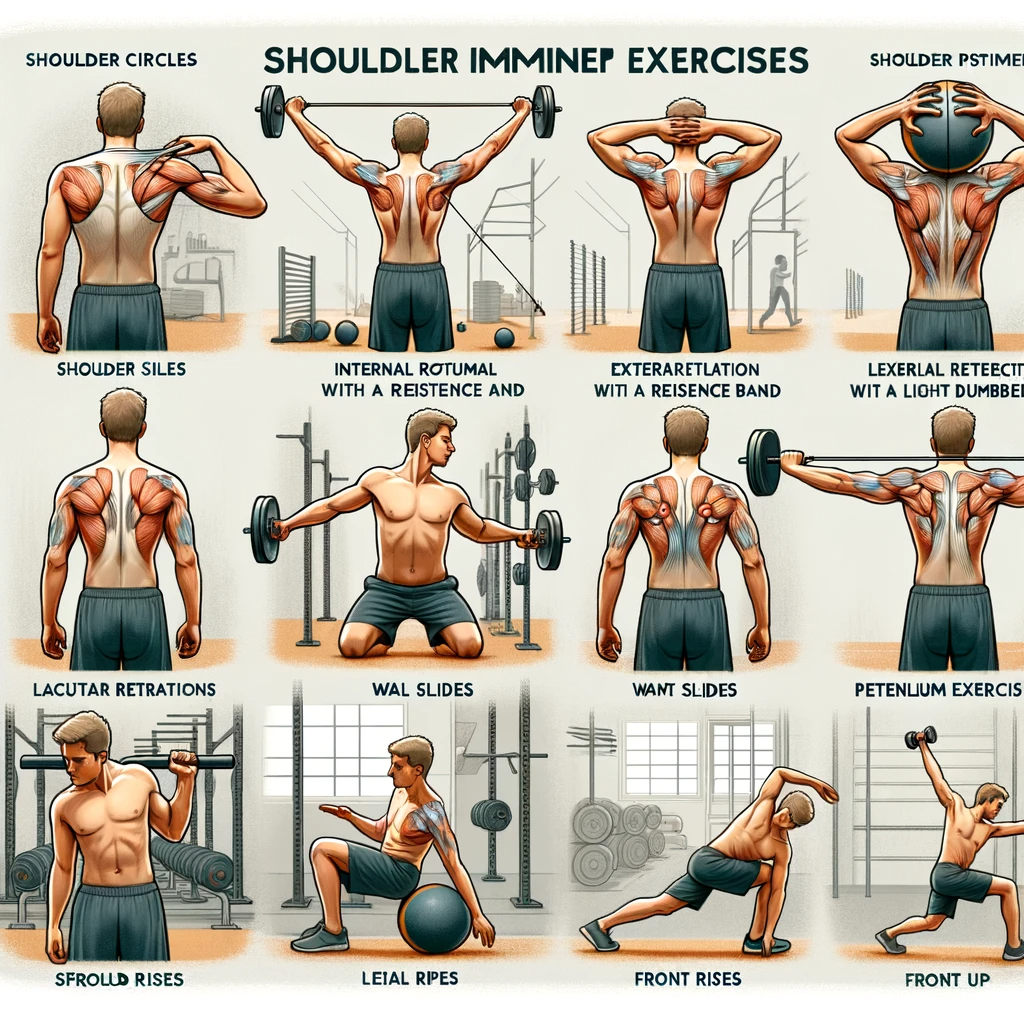Introduction to Shoulder Impingement
Shoulder impingement is a common issue affecting a significant portion of the population, particularly those engaged in activities requiring repetitive arm movements. This condition, characterized by pain and limited mobility, occurs when the shoulder’s rotator cuff tendons are excessively compressed during shoulder movements. The good news is that specific exercises can be highly beneficial in managing and improving this condition. In this comprehensive guide, we delve into ten effective shoulder impingement exercises aimed at providing pain relief and enhancing shoulder mobility.
Understanding Shoulder Impingement
Before diving into the exercises, it’s crucial to understand what shoulder impingement entails. This condition is often seen in athletes, particularly swimmers and baseball players, but can also affect anyone who performs repetitive overhead activities. It’s caused by the narrowing of the space between the shoulder bones, leading to tendon irritation and inflammation. Symptoms include pain, weakness, and reduced range of motion in the shoulder.
The Importance of Exercise for Shoulder Impingement
Exercise plays a pivotal role in managing shoulder impingement. Properly executed exercises can reduce pain, increase shoulder strength, and improve range of motion. However, it’s essential to approach these exercises with caution and under professional guidance to avoid aggravating the condition.
Warm-Up: Preparing the Shoulder
Shoulder Circles: Begin by warming up the shoulder with gentle shoulder circles. Stand with your arms by your sides and rotate your shoulders in a circular motion, gradually increasing the range of motion. Perform 10 circles forward and then 10 backward.
Arm Swings: Stand straight and swing your arms gently back and forth across the front of your body. Perform this for about 30 seconds to further loosen the shoulder muscles.
Rotator Cuff Strengthening
Internal and External Rotation: Use a resistance band for these exercises. For internal rotation, anchor the band to a door at waist level. Stand with the affected arm closest to the door and hold the band with the arm at a 90-degree angle. Gently pull the band towards your waist and then slowly return to the starting position. For external rotation, face away from the door with the band across your body. Pull the band outward while keeping your elbow close to your side. Perform 10-15 repetitions for each exercise.
Scapular Stability and Mobility
Wall Slides: Stand with your back against a wall, arms raised overhead, and elbows bent at 90 degrees. Slide your arms up and down the wall, maintaining contact throughout the motion. Perform 15-20 repetitions.
Scapular Retractions: Sit or stand with your arms at your sides. Focus on squeezing your shoulder blades together as if trying to hold a pencil between them. Hold for 5 seconds and release. Repeat 10-15 times.
Shoulder Flexibility and Range of Motion
Doorway Stretch: Stand in a doorway with your arms on the door frame at shoulder height. Lean forward gently until you feel a comfortable stretch in the front of your shoulders. Hold for 15-30 seconds.
Pendulum Exercise: Lean forward, supporting yourself with one hand on a table. Let your affected arm hang down and gently swing it in small circles. Perform 10 circles in each direction.
Advanced Shoulder Strengthening
Lateral Raises: With light dumbbells, stand or sit with your arms at your sides. Slowly lift your arms to the side, keeping a slight bend in the elbows, up to shoulder height. Lower them back down gently. Perform 10-15 repetitions.
Front Raises: Similar to lateral raises, but lift the weights in front of you. Ensure that your movements are controlled, and avoid swinging the weights. Perform 10-15 repetitions.
Incorporating Functional Movements
Push-Ups with a Twist: Perform a standard push-up, but as you rise, rotate your body and extend one arm upwards, turning your head to follow your hand. Alternate sides with each push-up. This exercise not only strengthens the shoulders but also incorporates rotational movements that benefit overall shoulder health.
Conclusion Consistency and Professional Guidance
Consistent practice of these exercises can lead to significant improvements in shoulder impingement symptoms. However, it’s essential to seek advice from a healthcare professional or a physical therapist before starting any new exercise program, especially if you’re experiencing shoulder pain. They can provide tailored advice and ensure that you’re performing the exercises correctly and safely.



